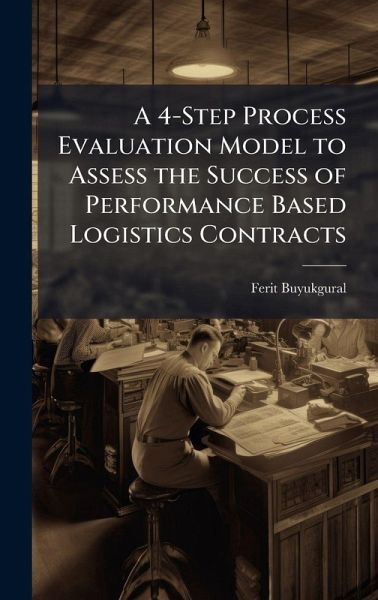
A 4-Step Process Evaluation Model to Assess the Success of Performance Based Logistics Contracts
Versandkostenfrei!
Versandfertig in über 4 Wochen
29,99 €
inkl. MwSt.
Weitere Ausgaben:

PAYBACK Punkte
15 °P sammeln!
Performance-Based Logistics (PBL) is DoD' s preferred product support approach in order to satisfy vitally-important war fighter needs. The elasticity of these needs makes it impossible to build a one-fits-all template PBL contract with the contractors. Thus, both economic metrics such as Cost per Unit Usage and non-economic metrics such as Availability, Reliability, Logistics Foot Print and Logistics Response Time can be defined and tailored according to each individual program. However, evaluation of the success of a PBL contract gets harder proportional to the increased number of different ...
Performance-Based Logistics (PBL) is DoD' s preferred product support approach in order to satisfy vitally-important war fighter needs. The elasticity of these needs makes it impossible to build a one-fits-all template PBL contract with the contractors. Thus, both economic metrics such as Cost per Unit Usage and non-economic metrics such as Availability, Reliability, Logistics Foot Print and Logistics Response Time can be defined and tailored according to each individual program. However, evaluation of the success of a PBL contract gets harder proportional to the increased number of different types of metrics. This research suggests an integrated model approach for combining multiple criteria when assessing the success of a PBL contract. This approach may be used in operational-level decisions such as reward and penalty decisions within a contract, or strategic-level decisions such as extending the contract with the same contractor, terminating the contract and negotiating with other contractors. This work has been selected by scholars as being culturally important, and is part of the knowledge base of civilization as we know it. This work was reproduced from the original artifact, and remains as true to the original work as possible. Therefore, you will see the original copyright references, library stamps (as most of these works have been housed in our most important libraries around the world), and other notations in the work. This work is in the public domain in the United States of America, and possibly other nations. Within the United States, you may freely copy and distribute this work, as no entity (individual or corporate) has a copyright on the body of the work. As a reproduction of a historical artifact, this work may contain missing or blurred pages, poor pictures, errant marks, etc. Scholars believe, and we concur, that this work is important enough to be preserved, reproduced, and made generally available to the public. We appreciate your support of the preservation process, and thank you for being an important part of keeping this knowledge alive and relevant.












